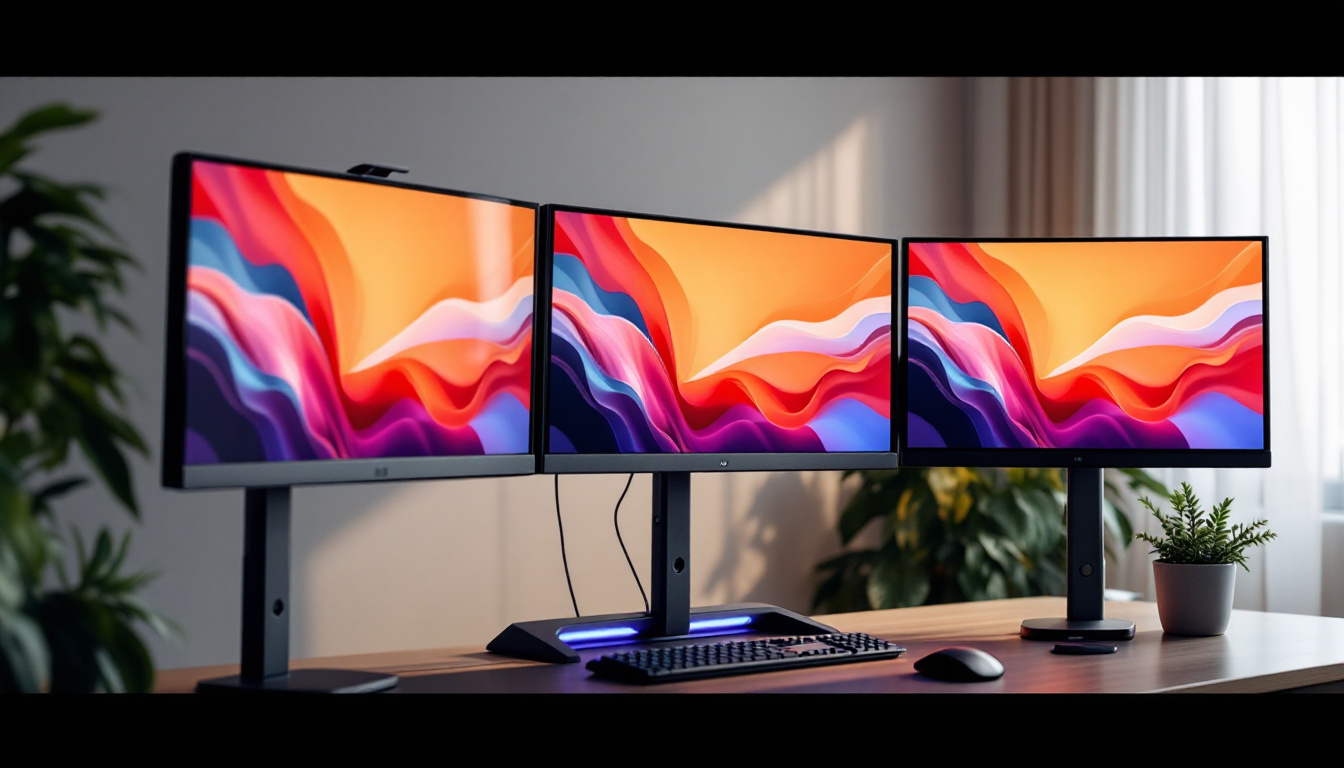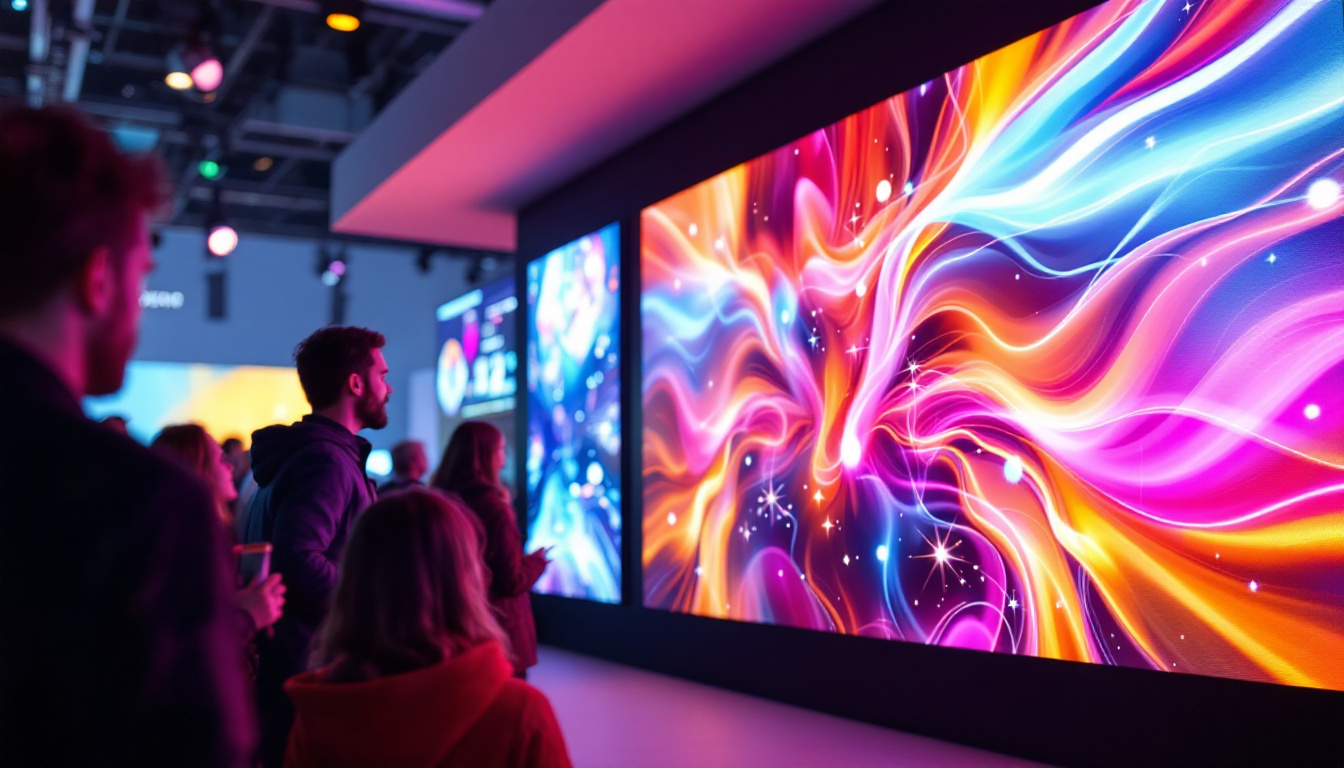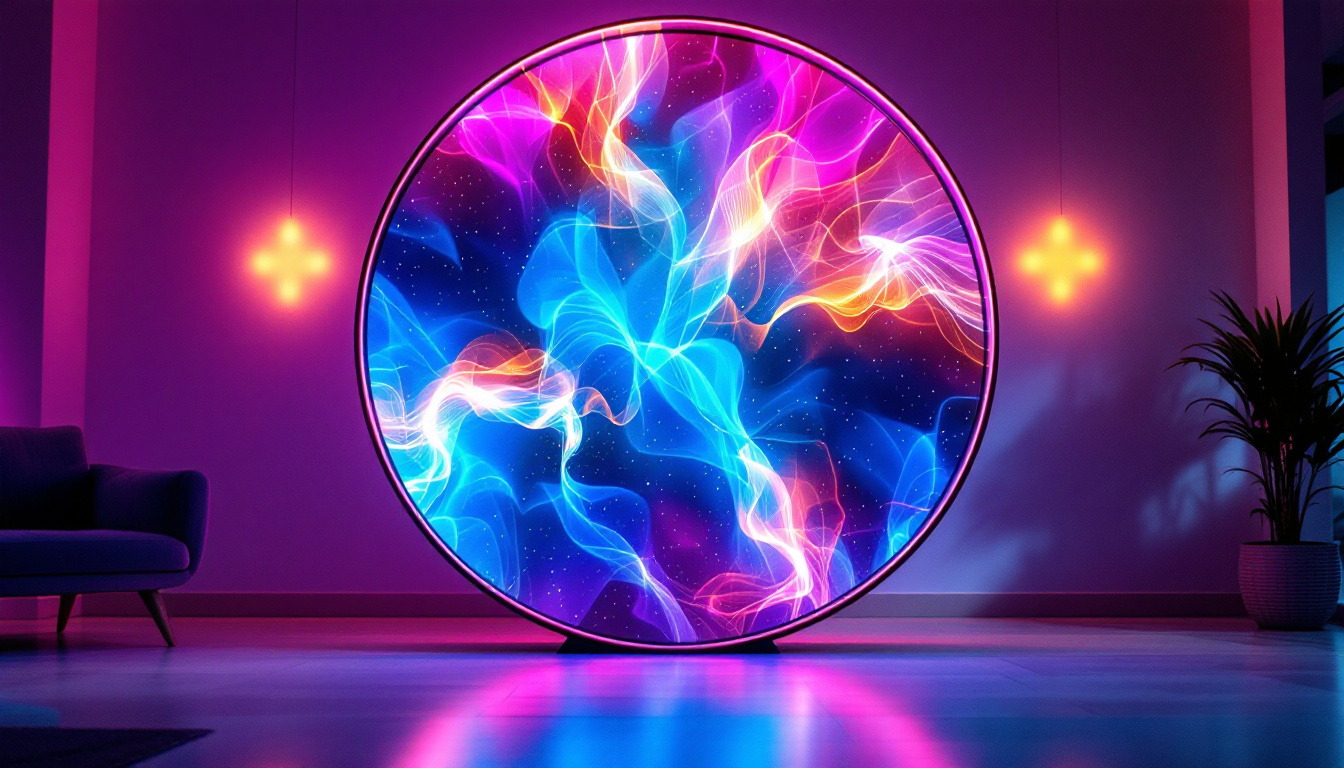Television LCD: LED Display Explained
In the rapidly evolving world of television technology, terms like LCD and LED are often used interchangeably, leading to confusion among consumers. Understanding what these terms mean and how they impact your viewing experience is essential when choosing a new television. This article delves into the intricacies of LCD and LED displays, explaining their technology, advantages, and what to consider before making a purchase.
Understanding LCD Technology
What is an LCD Screen?
LCD stands for Liquid Crystal Display, a technology that has been a cornerstone of flat-panel television manufacturing since the early 2000s. An LCD screen uses liquid crystals sandwiched between two layers of glass or plastic. These crystals do not emit light by themselves; instead, they manipulate light passing through them to create images.
The liquid crystals align in different ways when an electric current is applied, controlling the amount of light that passes through each pixel. This process allows the display to produce a wide range of colors and images with sharp detail. However, because LCDs do not emit light, they require a backlight to illuminate the screen. This characteristic is crucial in understanding how LCD technology differs from other display types, such as OLED, which generates its own light at the pixel level. As a result, LCD screens can sometimes struggle with deep blacks and contrast ratios compared to their self-illuminating counterparts.
The Role of Backlighting in LCD TVs
Traditional LCD TVs used cold cathode fluorescent lamps (CCFLs) as their backlighting source. These lamps illuminated the entire screen uniformly, but they had limitations in terms of energy efficiency, brightness, and color accuracy.
Modern LCD TVs have largely replaced CCFLs with LED backlighting, which offers significant improvements. This shift has led to the popular term “LED TV,” which technically refers to an LCD TV that uses LED backlights instead of fluorescent ones. LED technology not only enhances brightness and color vibrancy but also allows for localized dimming, where specific areas of the screen can be dimmed or brightened independently. This capability results in better contrast and a more dynamic viewing experience. Additionally, the compact size of LED lights enables manufacturers to create thinner and lighter displays, which has contributed to the sleek designs of contemporary televisions. As the technology continues to evolve, features such as edge-lit and full-array backlighting are becoming more common, further enhancing the visual performance of LCD screens.
LED Displays: What Does It Mean?
LED as a Backlight, Not a Display
Despite common misconceptions, LED (Light Emitting Diode) does not refer to the display technology itself but rather the type of backlighting used in LCD TVs. LEDs are tiny semiconductor devices that emit light when an electric current passes through them. Their small size, energy efficiency, and ability to produce bright light make them ideal for backlighting purposes.
LED backlighting can be arranged in different ways, influencing the TV’s picture quality and design. The two main types are edge-lit and full-array LED backlighting. The choice between these two can significantly affect not only the visual performance but also the overall viewing experience, making it essential for consumers to understand their differences when shopping for a new television.
Edge-Lit vs. Full-Array LED Backlighting
Edge-lit LED TVs position the LEDs along the perimeter of the screen. Light is then diffused across the panel using light guides. This design allows for thinner and lighter TVs but can sometimes result in uneven brightness and less precise contrast control. While edge-lit models are often more affordable and aesthetically pleasing due to their slim profiles, they may struggle with displaying deep blacks and may exhibit a phenomenon known as “light bleed,” where bright areas of the screen can wash out darker sections.
Full-array LED backlighting places LEDs directly behind the entire screen in a grid pattern. This setup allows for localized dimming, where specific zones of LEDs can be dimmed or brightened independently. Local dimming enhances contrast ratios and black levels, leading to a more vivid and dynamic picture. This technology is particularly beneficial for watching movies in dark environments, as it can create a more immersive experience by improving shadow detail and overall depth in the image. Additionally, full-array LED TVs often come equipped with advanced features like HDR (High Dynamic Range), which further enhances color accuracy and brightness, making them a popular choice among home theater enthusiasts.
How LED Backlighting Enhances LCD TVs
Improved Brightness and Energy Efficiency
LED backlights offer higher brightness levels compared to CCFLs, which is particularly beneficial in brightly lit rooms or for HDR (High Dynamic Range) content. Additionally, LEDs consume less power, contributing to energy savings and longer device lifespan. This efficiency not only reduces electricity bills but also lessens the environmental impact, making LED technology a more sustainable choice for consumers. As energy standards continue to evolve, many manufacturers are focusing on creating LED TVs that not only meet but exceed these benchmarks, further promoting eco-friendly practices.
Better Color Accuracy and Contrast
Because LEDs can be controlled more precisely, especially in full-array configurations, they enable better contrast ratios. This means deeper blacks and brighter whites, which are crucial for a realistic and immersive viewing experience. Some LED TVs use quantum dot technology to further enhance color accuracy and vibrancy. This technology allows for a wider color gamut, resulting in more lifelike images that can reproduce the subtleties of skin tones and the richness of landscapes. Furthermore, advancements in local dimming techniques have made it possible to enhance contrast even further, allowing for breathtaking visuals that draw viewers into the action.
Thinner and More Stylish Designs
The compact size of LEDs allows manufacturers to create ultra-thin TV panels with sleek designs. This trend has led to TVs that not only perform well but also serve as aesthetic additions to modern living spaces. The ability to mount these thin panels flush against walls or incorporate them into furniture design has transformed how we think about home entertainment setups. Additionally, many LED TVs now come with customizable bezels and stands, allowing consumers to tailor their devices to fit their personal style and home decor. As technology continues to advance, we can expect even more innovative designs that blend seamlessly into our living environments, making the TV a focal point of style rather than just a functional device.
Comparing LCD-LED TVs with Other Display Technologies
OLED vs. LCD-LED: Key Differences
Organic Light Emitting Diode (OLED) TVs differ fundamentally from LCD-LED TVs. OLED panels emit light at the pixel level, meaning each pixel can turn on or off independently. This capability results in perfect black levels and superior contrast ratios.
In contrast, LCD-LED TVs rely on backlighting, which can limit black level performance due to light bleed. However, OLEDs are generally more expensive and can be susceptible to burn-in over time, which is less of a concern with LCD-LED TVs.
QLED and Mini-LED Technologies
Quantum Dot LED (QLED) TVs are a type of LCD-LED TV that use quantum dots to improve color accuracy and brightness. Brands like Samsung have popularized QLED technology as a premium alternative within the LCD-LED category.
Mini-LED is a newer backlighting technology that uses thousands of tiny LEDs to provide even more precise local dimming and improved contrast. This technology narrows the gap between LCD-LED and OLED performance, offering excellent picture quality at a lower price point.
What Should Consumers Consider When Buying an LCD-LED TV?
Screen Size and Resolution
Choosing the right screen size depends on room dimensions and viewing distance. Larger screens provide a more immersive experience but require higher resolution to maintain image sharpness. Today, 4K resolution is standard in most new TVs, offering four times the pixels of Full HD.
Backlight Type and Local Dimming
Understanding whether a TV uses edge-lit or full-array LED backlighting can help set expectations for picture quality. Full-array with local dimming typically offers better contrast and black levels, which is especially important for watching movies in dark environments.
HDR Support and Color Performance
High Dynamic Range (HDR) enhances the contrast and color range of TV content. Look for TVs that support HDR10, Dolby Vision, or HDR10+ standards. Additionally, technologies like quantum dots can improve color accuracy, making the viewing experience more lifelike.
Smart Features and Connectivity
Modern LCD-LED TVs often come with built-in smart platforms, allowing access to streaming services, apps, and voice assistants. Consider the user interface, app availability, and connectivity options such as HDMI 2.1 ports for gaming and future-proofing.
Conclusion: Navigating the LCD-LED TV Landscape
LCD-LED televisions remain a dominant force in the market due to their balance of performance, affordability, and design flexibility. Understanding that LED refers to the backlighting technology rather than the display itself clarifies much of the confusion surrounding TV specifications.
Advancements like full-array local dimming, quantum dots, and mini-LED backlights have significantly enhanced the picture quality of LCD-LED TVs, making them competitive with more expensive alternatives like OLED. When shopping for a new TV, focusing on backlight type, HDR support, and smart features will help consumers make informed decisions that align with their viewing preferences and budget.
Ultimately, the best television is one that fits the viewer’s environment, content preferences, and technical expectations. With a clearer understanding of LCD and LED technologies, buyers can confidently navigate the options and enjoy a superior home entertainment experience.
Discover the Future of Visual Experience with LumenMatrix
As you consider upgrading your home entertainment system, embrace the cutting-edge technology that LumenMatrix offers. Specializing in a wide array of LED display solutions, from Indoor and Outdoor LED Wall Displays to innovative LED Sports and Transparent Displays, LumenMatrix is at the forefront of enhancing how you experience visual content. Whether you’re looking to create an immersive movie-watching environment or seeking dynamic digital signage, LumenMatrix has the expertise to bring your vision to life. Check out LumenMatrix LED Display Solutions today and step into a world where clarity, color, and performance meet design and innovation.































